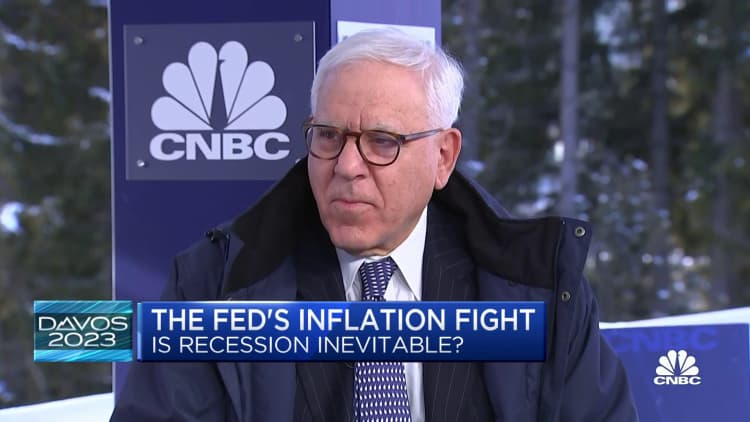The U.S. Federal Reserve will find it "very hard" to engineer an economic soft landing after its cycle of aggressive interest rate hikes, according to former Reserve Bank of India Governor Raghuram Rajan.
The Federal Open Market Committee in December raised its benchmark interest rate by 50 basis points to a target range between 4.25% and 4.5% — its highest level in 15 years — as it continues to fight sky-high inflation.
After a string of promising data releases indicated softening inflation, markets believe that the central bank is ready to ease its foot off the brake. Market pricing now suggests a hike of just 25 basis points at the Fed's February meeting.
Fed officials have emphasized that the fight to bring inflation back towards the FOMC's 2% target is not over. A key market concern is that a further tightening of monetary policy could tip the U.S. economy into recession.

"They need to bring down inflation, however as soon as they think they've done enough and pause, markets are going to be very reactive, they're going to celebrate," Rajan told CNBC's Arjun Kharpal at the World Economic Forum in Davos, Switzerland. "As they celebrate, it does the opposite of what the Fed wants, it loosens financial conditions quite a bit. People see their stock portfolios go up, they go out and spend. That's exactly the wrong reaction."
Rajan suggested that the Fed's ideal scenario is for the public to cautiously rein back spending and open up room for inflation to subside, as well as freeing up some slack in the so-far stubbornly tight U.S. labor markets.
Rajan, now a Katherine Dusak Miller Distinguished Service Professor of Finance at Chicago Booth, said the Fed is therefore likely to "err on the side of doing more rather than doing less," slightly overtightening and pushing unemployment higher in order to ensure that the downward inflationary trajectory is sustainable.

While this approach may work if the knock-on effects are "linear" — translating a little overtightening by the Fed to a small overshoot on unemployment — he noted the risk of a cliff edge effect in labor markets.
"If people are not firing workers because they see it is very hard to hire workers — nobody's firing, it's very hard to hire workers, let me keep on my workers — once you see enough slack build up in the labor market, you say 'it's easy to find workers, let me fire the ones I had in a hurry,' and then you get a mass layoff effect," Rajan explained. "Is it linear or is it non-linear? We don't know."
Housing market domino effect
Rajan also pointed towards the potential U.S. housing implications, after mortgage rates dropped to 6.23% last week. They stood in a 6.5% to 7% range for much of 2022, even as house prices stabilized.
"Nobody's selling, therefore the little demand is met by little supply. What's [it] going to take [for] people to sell? Right now, they're not selling because they can't buy," Rajan said. "I have a 3% mortgage, I can't afford a house at 7% so I'm not going to sell because I can't buy. If I get laid off, I can't make my mortgage payments, I have to sell — that's when the mortgage market takes a downturn, the housing market takes a downturn, prices fall — that's another downside potentially."
Rajan stressed that the labor and housing market cliff edge is the "dire scenario" and that the most likely outcome was a slight U.S. recession. He refused to rule out a soft landing, which avoids two consecutive quarters of negative growth.





